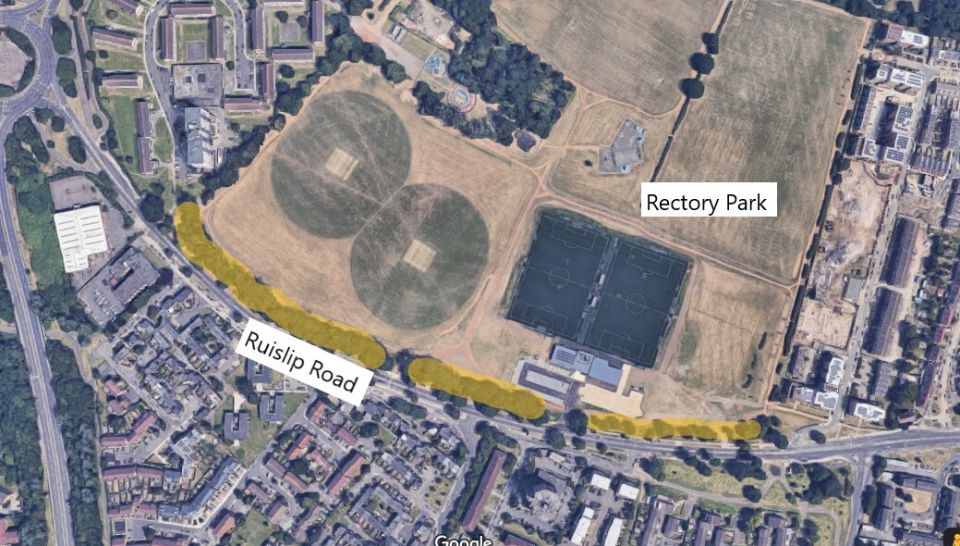New Trees for Rectory Park
Trees for Cities are pleased to be working with Ealing Council to plant and maintain a variety of new trees in Rectory Park. The trees will provide colour and visual interest to the park and create more wildlife habitat in the space.

Why did we plant trees here?
Trees for Cities planted 47 new trees in Rectory Park. Some of these were arranged along one of the paths in the middle of the park to provide shade along the walking route, while others were positioned around the existing playground for visual interest and additional shade. We took care that the placement of the trees as they grow will not impact sightlines or sports pitches across the park.
Most of the trees were planted as individual 'standards', 10-15 metres apart, with some arranged as a copse with three smaller trees around one larger one.
Trees such as Handkerchief tree and Tulip tree were placed at key viewpoints in the park for their standout flowers once they mature. Other trees such as Common beech, Downy birch, Field maple, Hawthorn, Hazel and Hornbeam are native species and therefore better suited to local wildlife, which will increase the biodiversity of the park. Trees such as Field maple and Pagoda tree grow to have a wide and dense branching structure which will provide much needed shade for warmer and sunnier months.
Thank you for planting a tree with us!
In February 2025 school groups and volunteers from the local community joined us for workshops and a Community Planting Day to plant the trees together.
There may be opportunities to get involved in this area in the future. If you have any questions about this project or any others, please contact our Community Engagement Team at community@treesforcities.org .
Really positive!! Everyone was so friendly it was great to learn and see others who care about nature.
Volunteer at Rectory Park
Previous planting at Rectory Park
In spring 2021, Trees for Cities planted 5000 small trees along the border of Rectory Park.
The trees planted were a mixture of native species, which provide habitat for wildlife as well as provide a barrier to the pollution from the busy Ruislip Road.
Trees such as Hawthorn, Hazel and Guelder Rose provide food and low-level cover for wildlife. Other trees such as Field Maple, Hornbeam and Beech add colour and interest to the canopy as well as provide a barrier to the noise and pollution of the road.
